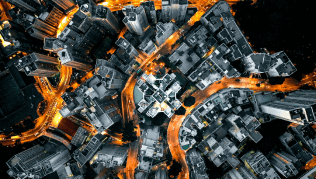Photography, as an art form, has evolved beyond capturing beautiful images; it has become a powerful tool for advocacy, education, and social change. In a world where visual content can spread rapidly through digital platforms, photography possesses an unparalleled ability to communicate complex social issues, evoke empathy, and inspire action. Visual storytelling through photography plays an essential role in raising awareness of global and local issues, from human rights abuses to environmental challenges.
In this article, we will explore how photography, through visual storytelling, raises awareness of social issues, fosters change, and continues to be an indispensable tool for advocacy. We will also discuss the role of organizations like ZiiP Foundation in contributing to this mission, focusing on how they use photography as a medium to inspire meaningful change.
Table of Contents
The Power of Photography in Visual Storytelling
At its core, visual storytelling is the art of using images to convey a narrative. Unlike other forms of communication, photography can transcend language barriers, making it a universal medium for conveying messages. Photographers use their craft to tell stories about people, cultures, and social conditions, often bringing to light issues that may otherwise remain hidden.
The emotional power of photography lies in its ability to humanize abstract concepts. For instance, statistics about global poverty or climate change can feel distant or intangible. However, a powerful photograph of a family displaced by a natural disaster or a child suffering from malnutrition can immediately make these issues personal and relatable.
Visual storytelling is not limited to one type of photography. It spans several genres, including documentary photography, photojournalism, street photography, and even conceptual photography. Each of these forms offers a unique way to shed light on the complexities of society and evoke emotional responses that drive social change.
How Photography Can Inspire Social Change
Photography’s ability to inspire social change is rooted in its power to tell untold stories and humanize statistics. Some of the most iconic images in history have contributed to significant social movements and policy changes. For instance, the photograph of a young Vietnamese girl fleeing a napalm attack during the Vietnam War shifted public opinion and galvanized the anti-war movement in the United States. Similarly, images from the civil rights movement in the 1960s brought the brutality of segregation to the forefront of national consciousness, helping spur political action and reform.
1. Raising Awareness About Social Issues
One of the most potent aspects of visual storytelling through photography is its ability to raise awareness about important issues. Many social problems, such as poverty, inequality, and climate change, are not always visible in our day-to-day lives. Photography brings these hidden realities to the surface, ensuring that they are seen by a global audience.
Photographers working in conflict zones, for example, document human rights violations, often putting their own safety at risk to expose the harsh truths of war and oppression. These images can be shared worldwide, creating a sense of urgency for action. As more people become aware of these issues, they are more likely to engage with advocacy efforts, donate to causes, or participate in policy discussions.
Organizations like National Geographic and The Pulitzer Center regularly feature photojournalism projects that highlight environmental destruction, displacement of communities, and endangered wildlife, among other topics. Their visual content has the potential to influence public opinion and inspire legislative change. Photography creates an emotional connection with these issues, compelling viewers to think critically and, in many cases, act.
2. Amplifying Marginalized Voices
Photography is also an important medium for amplifying the voices of marginalized communities. Often, individuals and groups who experience inequality, discrimination, or violence are not given the platforms to share their stories. Photographers working within these communities can document their lives and experiences, offering a voice to those who may not have access to mainstream media.
For example, photojournalists covering the refugee crisis in Europe have produced powerful visual stories that shed light on the hardships faced by displaced individuals. These photographs provide a platform for refugees to share their narratives with the world, offering an authentic and empathetic view of their experiences. As a result, these images have contributed to global discussions about immigration policies and the treatment of refugees.
Similarly, movements such as Black Lives Matter have been supported by the work of photographers who document protests, police brutality, and the resilience of the African-American community. These images not only provide evidence of injustice but also serve as a catalyst for ongoing social movements.
3. Driving Real-World Change
Photography has a unique ability to not only document reality but also to drive real-world change. By putting faces to issues and evoking an emotional response, visual storytelling has the power to mobilize individuals, organizations, and governments to take action.
For instance, in the environmental space, photographs of deforestation, endangered wildlife, and polluted oceans have helped raise awareness about the need for sustainable practices. Images captured by photographers working with environmental organizations like Greenpeace and WWF have become essential tools for advocating for policy change to protect the environment.
In the realm of humanitarian aid, visual storytelling has proven to be incredibly effective in fundraising campaigns. Nonprofits often use photography in their marketing efforts to connect potential donors to the people and causes they are supporting. By showing the direct impact of donations, photography helps to create a sense of urgency and empathy, leading to increased support for various social causes.
Photography as an Educational Tool for Social Change
Photography is not just a tool for advocacy; it is also an educational tool. Visual storytelling helps bridge the gap between abstract issues and real-world consequences. Educational institutions, nonprofits, and media outlets often use photography to educate the public about critical social issues, from climate change to gender inequality.
For example, photographers working on long-term documentary projects often focus on specific social issues, such as the impact of climate change on indigenous communities or the effects of war on children. These projects provide in-depth, nuanced visual narratives that allow viewers to understand the complexities of these issues in a way that written reports or statistics alone cannot.
In educational settings, photography is increasingly being used to teach students about the power of visual narratives. Courses in photojournalism, documentary photography, and visual storytelling emphasize the role of photography in raising awareness and fostering social change. Through their lens, photographers become educators, offering insights into issues that demand attention and action.
ZiiP Foundation’s Role in Using Photography for Social Change
ZiiP Foundation is deeply committed to harnessing the power of visual storytelling to inspire social change. The foundation recognizes that photography has a unique capacity to convey messages, influence public opinion, and drive action. By supporting photographers and providing them with platforms to share their work, ZiiP contributes to the global effort to address critical social issues.
1. Educational Programs for Visual Storytelling
ZiiP Foundation aims to nurture the next generation of socially conscious photographers through its educational initiatives. By offering workshops, masterclasses, and mentorship programs, ZiiP ensures that emerging photographers develop the skills they need to use their craft for advocacy. These educational programs will focus not only on technical skills but also on the ethical responsibilities of visual storytelling, particularly when working on sensitive social issues.
ZiiP will collaborate with industry professionals, activists, and scholars to create learning opportunities that highlight the intersection of photography and social change. By fostering an environment of learning and exploration, ZiiP will empower photographers to create impactful work that raises awareness of global challenges and drives positive change.
2. Amplifying Socially Relevant Projects
In addition to education, ZiiP Foundation plans to support photographers working on socially relevant projects through grants, exhibitions, and collaborative initiatives. ZiiP will provide platforms for photographers who focus on human rights, environmental sustainability, and other critical issues to share their work with global audiences.
By amplifying the voices of photographers working on these issues, ZiiP aims to contribute to global conversations about social justice, inequality, and environmental preservation. Whether through exhibitions, online platforms, or partnerships with advocacy organizations, ZiiP will use photography as a tool to drive awareness and action.
3. Fostering Global Cultural Exchange
ZiiP Foundation recognizes that social issues are not confined to specific regions or communities—they are global challenges that require global solutions. ZiiP will foster international collaborations that allow photographers from diverse backgrounds to engage with each other, share their perspectives, and contribute to a broader understanding of the world’s challenges.
Through residencies and cultural exchange programs, ZiiP will provide photographers with the opportunity to work in new environments, gain inspiration from different cultures, and collaborate on projects that address universal issues. By supporting cross-cultural collaboration, ZiiP will help promote unity and understanding through the power of photography.
Conclusion
Photography, as a form of visual storytelling, is one of the most powerful tools available for raising awareness about social issues and inspiring real-world change. From documenting human rights abuses to shining a light on environmental destruction, photography has the unique ability to humanize global challenges and compel action.
Organizations like ZiiP Foundation play a crucial role in supporting photographers who are committed to using their craft for social change. Through educational programs, grants, and international collaborations, ZiiP aims to empower photographers to tell stories that matter and to use their work as a catalyst for social progress. As we continue to face pressing global challenges, photography will remain an essential tool for advocacy, education, and transformation.

